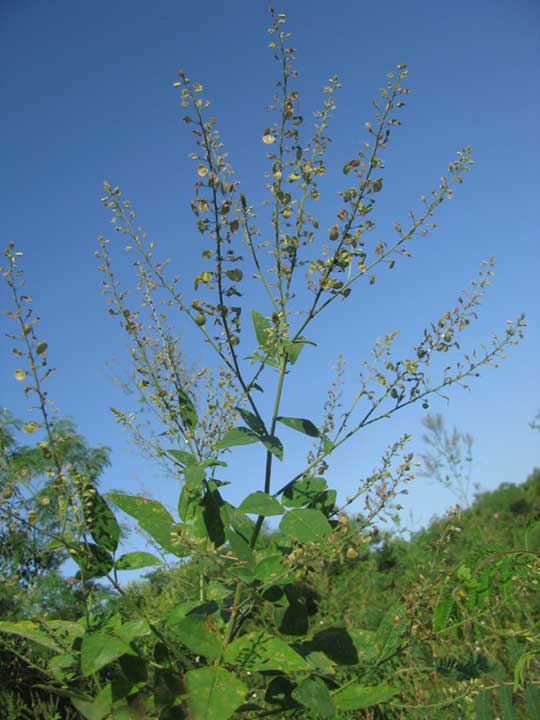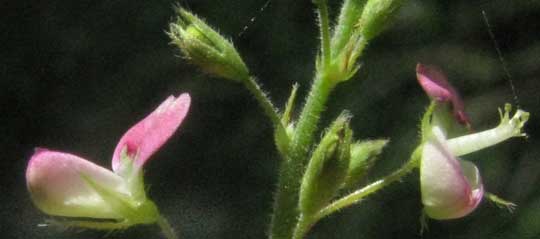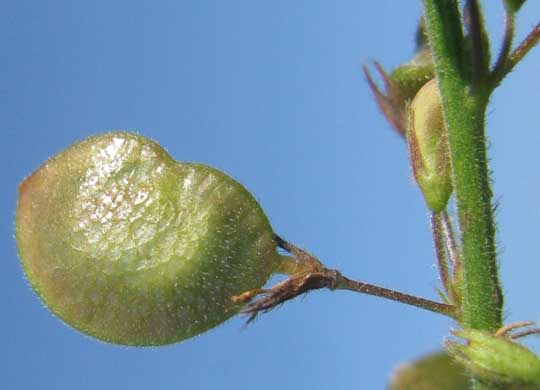Excerpts from Jim Conrad's
Naturalist Newsletter
from the November 27, 2011 Newsletter issued from Hacienda Chichen Resort beside Chichén Itzá Ruins; limestone bedrock; elevation ~39m (~128ft), N20.675°, W88.569°; central Yucatán state, MÉXICO
ZARZABACOA DULCE
Nowadays along roadsides and in abandoned fields there's an abundance of ten-ft-tall plants (3m) with trifoliate leaves and diffuse inflorescences of tiny flowers, and flat, waferish fruits, as shown below:

This weed's general appearance will remind Northerners familiar with their local weeds of the tick trefoils, genus Desmodium, in the enormous Bean Family. Its tiny, rosy flowers, which display the "butterfly-like" or papilionaceous structure typical of Bean Family blossoms, seem to confirm this, as seen below:

In that picture the blossom on the right has had its "keel" -- its two lower petals fused at their common borders -- pulled down, revealing how the stamens' filaments unite into a white cylinder surrounding the ovary's long, slender style. That's typical of such Bean Family flowers.
But then, the plant's nonconformist fruit is shown below:

All tick trefoil fruits I've ever seen were longish and consisted of several sections divided from one another by deep indentations of the lower margin. Also, they were always densely invested with long, stiff, hooked hairs that caught onto animal fur and cloth, giving the fruits free rides to new homes. But this fruit bears a single bean, and its hairs aren't in the least long, stiff and hooked.
Nonetheless, we do indeed have a tick trefoil here, a very unusual one because of those fruits and the tininess of the flowers. It's DESMODIUM GLABRUM, native to most of tropical America, including the Caribbean. The most commonly appearing common name for it is Zarzabacoa Dulce.
"Dulce" means "sweet" in Spanish, and the word "zarza" denotes any kind of stickery bramble. The name zarzabacoa is applied to tick-trefoils in the genus Desmodium in general, so this is the sweet one. The only thing I can find sweet about it is that it's nice enough to not stick its fruits to my clothes and hairy arms and legs as I pass by.
In recently abandoned places this species sometimes forms pure stands. I'll be watching to see if birds eat the mature beans. If they do, Zarzabacoa Dulce will have to be considered a major contributor to seed-eating birds in this area.